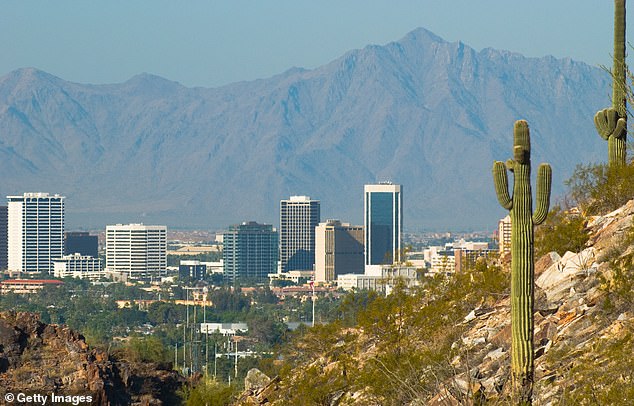The one American city that’s almost beaten the war on inflation – and why prices are rising far slower here than any other area across the country
One major city has emerged as the big winner in the war on inflation, with prices rising much more slowly than in other areas of the US.
Consumer prices in Phoenix, Arizona, increased 2.6 percent between April 2023 and last month, according to data from the Bureau of Labor Statistics.
This is nearly in line with the Federal Reserve’s 2 percent target, and is much lower than the higher annual national inflation rate of 3.4 percent.
The result is not a one-off either: the city has maintained the interest rate below 3 percent since October last year – and even fell to 2.2 percent in February.
Economists say the key to Phoenix’s lower inflation rate is cooling rents and home prices. NBC News reported.
Prices in Phoenix, Arizona, rose just 2.6 percent between April 2023 and last month — better than the national average of 3.4 percent and nearly in line with the Federal Reserve’s 2 percent target.

Experts insist that when rents fall, headline inflation falls too – and that home prices in Phoenix have fallen in recent years
Experts explained that when rents fall, overall inflation also falls.
“Housing inflation remains my most valuable indicator for the foreseeable future,” Federal Reserve Bank of Chicago President Austan Goolsbee said last month.
In Phoenix, median home sales prices rose 5.1 percent between April 2023 and April 2024 to an average of $450,000.
But the increase came as sales fell sharply, with nearly 3 percent fewer homes sold than in the previous 12-month period, according to Redfin data.
Sellers in Phoenix are also admitting to a lack of demand, with 31 percent of homeowners lowering their asking prices in March.
Mark Stapp, a real estate professor at Arizona State University’s W. P. Carey School of Business, told NBC News, “We are probably past the worst in terms of this substantial, sustained increase in rents and home prices in Phoenix, and we are going to bounce back.” to something that more reflects normal trends.’
According to a 2023 estimate, Phoenix is the fifth most populous city in the United States with 1,650,070 residents. The population grew by 2.6 percent between 2020 and 2023.
The city appeals to those looking for warm weather, employment opportunities, a strong economy, as well as picturesque natural landscapes and a vibrant downtown.

The city appeals to people looking for warm weather, employment, a strong economy, as well as picturesque natural landscapes and a vibrant downtown

According to a 2023 estimate, Phoenix is the fifth most populous city in the United States with 1,650,070 residents. The population grew by 2.6 percent between 2020 and 2023
Population growth has slowed in recent months a new analysis from Thursday showing that the previous annual growth rate of 1.6 percent fell to just 0.4 percent between 2019 and 2023.
Housing projects that started before and during the pandemic are now coming to an end and there are not enough newcomers or house hunters to fill the homes.
“It’s going to be a painful period of adjustment,” Moser told NBC News.
Vacancy rates in some apartment complexes are as high as 11 percent, which is far above the roughly 6 percent he considers typical for a healthy market.
Moser said this could be good news for tenants, who could see a rent drop of between 2 and 4 percent over the next year.
Phoenix’s rent drop has also affected the city’s overall “shelter index” — what it costs to have a roof over your head.
This index is critical to the overall inflation rate and has contributed to other inflation rates that are comparably lower than average in areas like Houston and Alaska.
